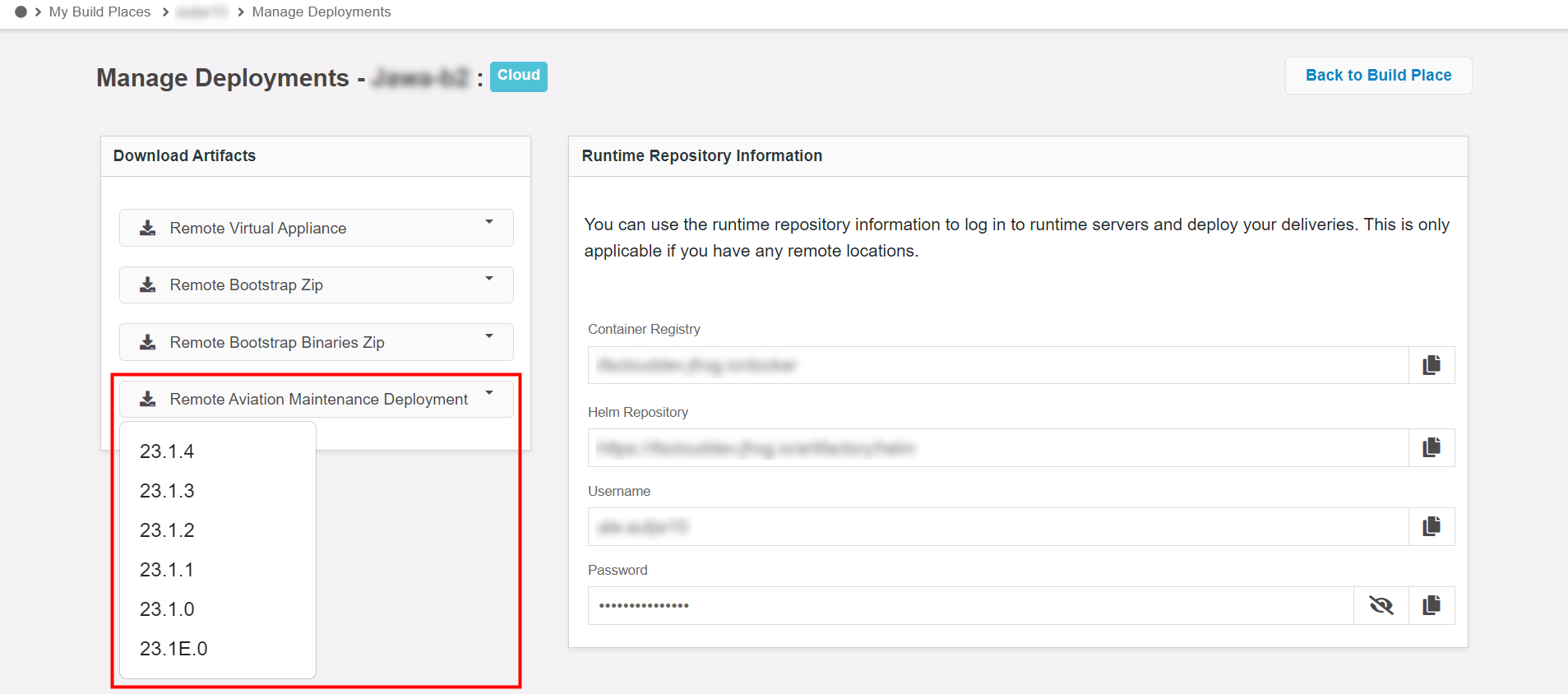Applying the Delivery to the Use Place¶
Depending on the Residency option a customer has selected for their Use Place, the deliveries are applied in two ways.
Residency Option 1 - IFS Cloud:¶
In this case, the approved delivery can be applied to the use place by using a scheduled job via SNOW. The process below explains the delivery deployment of IFS Cloud.

Use Place Management Form in SNOW¶
CSM Portal - https://support.ifs.com/csm
The IFS Lifecycle Experience Use Place Management Form can be found in the Catalogs menu as shown below.

In the form, enter customer details, use place detail,s and scheduling information.



Residency Option 2 - Remote:¶
In this scenario, the user has to download the delivery via the Deliveries section in the Build Place and apply it themselves, but beforehand the user must first have a properly configured remote Use Place to apply a delivery.
Artifact Download Functionality¶
In the event where the requirement arises to deploy the deliveries to the Use Place in a remote location, the scripts, other artifacts, and runtime repository information needed to set up the remote Use Place can be found in the Manage Deployments section in the Build Place.

1. General Artifacts¶
Both customers with residency options 'Cloud' and 'Remote' will have the option of downloading some general artifacts from the Manage Deployments section. These include Remote Virtual Appliance, Remote Bootstrap Zip, and Remote Aviation Maintenance Deployment.
2. A&D Artifacts¶
Customers with residency option 'Cloud' and the industry is A&D, will have a separate set of artifacts called Remote Aviation Maintenance Deployment in addition to the general artifacts.
The artifacts are available for all the Service Update versions related to the release version the customer is in. The relevant version can be selected and downloaded to be deployed in the Use Place.
Please note that this feature is available only for A&D customers in 22R2 and beyond.

The deployment instructions for A&D customers can be found in the here "Maintenix" section of the Remote Deployment Guide in the Technical Documentation.
3. PSO Artifacts¶
Customers with the residency option 'Remote' who have purchased PSO as an add-on to IFS components are able to download the latest PSO artifacts from the LE portal.

Password Generation for Customers with Cloud Residency Option¶
A password must be generated in order to view the runtime repository information. If the credentials are not visible, click on the Generate Password button to generate this information.

This task needs to be performed just once. Once completed, you can access the runtime repository information, as depicted in the screenshot provided.
